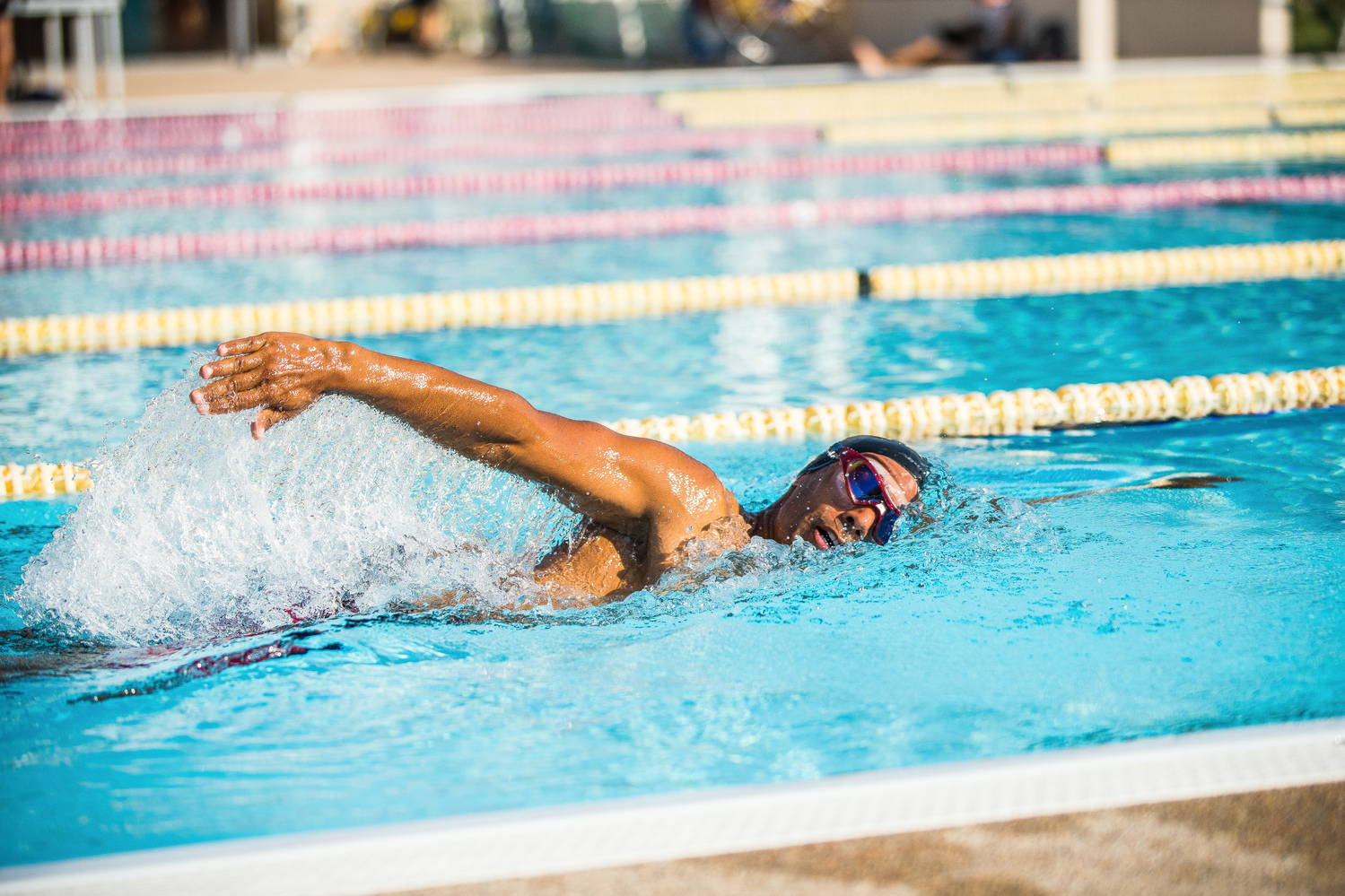Keep your arm straight when you are above the water, dip your fingertips in at head height and pull through the stroke with your fingers spread - that doesn't sound like an economical swimming style, quite the opposite! Nevertheless, it makes sense to integrate exaggerated movement sequences into the swimming technique training. We have tips and exercises for you.
With such contrast exercises, opposites can be experienced - the goal is to improve the feeling for water and above all the "aha experience": You as a swimmer should recognize for yourself which movement sequence makes the most sense.
AHA experiences while swimming
The technical training in swimming is usually very direct in triathlon. Example: The swimmer relaxes his arm too little in the surface phase? Then he should pay attention to a high elbow or shake his arm over water. However, this correction or exercise is predetermined from the outside, the swimmer usually finds it difficult to break through the automated process and relax the arm.
Contrast exercises do not provide the solution. Rather, the swimmer is given a task: Swim 25 meters with your arm stretched out in the overwater phase ("windmill"), then swim 25 meters with your elbows bent as much as possible and complete the passage with 25 meters of easy crawl.
The most important thing
Concentrate 100% on this movement, feel how the movement (with the water) feels and what influence this arm position has on your propulsion and your fatigue and then reflect on your experiences.
Contrast exercises can therefore not be used to achieve a direct and quick technique correction. Rather, it is about training the sense of water and movement, coordination and improving kinesthesia (explanation). These are essential requirements for implementing good technique in the water. Anyone who incorporates contrast exercises into their training is therefore working on the foundation of the technique. Neither tools nor large technical training blocks are required for this.
Disadvantage: While concentrating on a single part of the movement, other errors can creep into the movement!
Almost every "mistake" in the swimming movement can be worked up with contrast exercises and, as an added value, brings an improved feel for the water.
Also interesting
Some examples of contrast exercises:
- For catching water and hand position: fist swimming vs. swimming with spread fingers.
- Keep the wrist rigid vs. let the wrist be completely loose.
- For the above-water phase: keep your arm completely stretched out over the water (“windmill swimming”) vs. keep your arm rigidly bent.
- For the immersion: immerse the arm at the level of the head vs. immerse the arm as far forward as possible.
- For the underwater phase: extended arm pull vs. strongly bent elbow during the pull.
- End of pull at chest level vs. end of arm pull at knee level.
- For head pose: tuck your chin to your chest vs. throw your head back.
- Leave the neck muscles completely relaxed vs. contract the neck muscles rigidly.
- For breathing: pull your head completely out of the water vs. turn your head only minimally.
- Rotate your body completely vs. not move your body at all while breathing.
- For body tension: push off and keep your body completely relaxed vs. push off and keep your body rigid.
- For foot position: tighten toes vs. straighten foot completely.
- For the leg kick: leg movement from the knees (“cyclist leg kick”), keeping the knees fully extended.
- Small, high-frequency leg movements vs. large, low-frequency leg movements.
Examples of the design of a technical section
Contrast exercises are best done right after warming up and before the main program. The pace and distance are low, 25 meter sections are enough even for the better swimmers. Important: After each exaggerated movement, the "normal" movement should be carried out immediately afterwards. You should not work on more than two "construction sites" per training session, rather concentrate more intensively on a few problems! Decide whether you want to set only one contrast or include the second one as well: So if swimming with closed fist is "Contrast 1", swimming with spread fingers is "Contrast 2". Here are some suggested technique blocks with contrast exercises:
- 2x(4x50m): In the first block of four, 25 meters of contrast 1 (K1) and 25 meters of the whole layer (GL), in the second block of 25 meters of contrast 2 (K2) and 25 meters of GL
- 6×75 meters: 25 meters each of K1, K2 and GL
- 10×75 meters, for advanced: 25 meters with the right arm K1 and with the left arm K2. 25 meters with the left arm K1 and with the right arm K2. Then 25 meters GL.




















